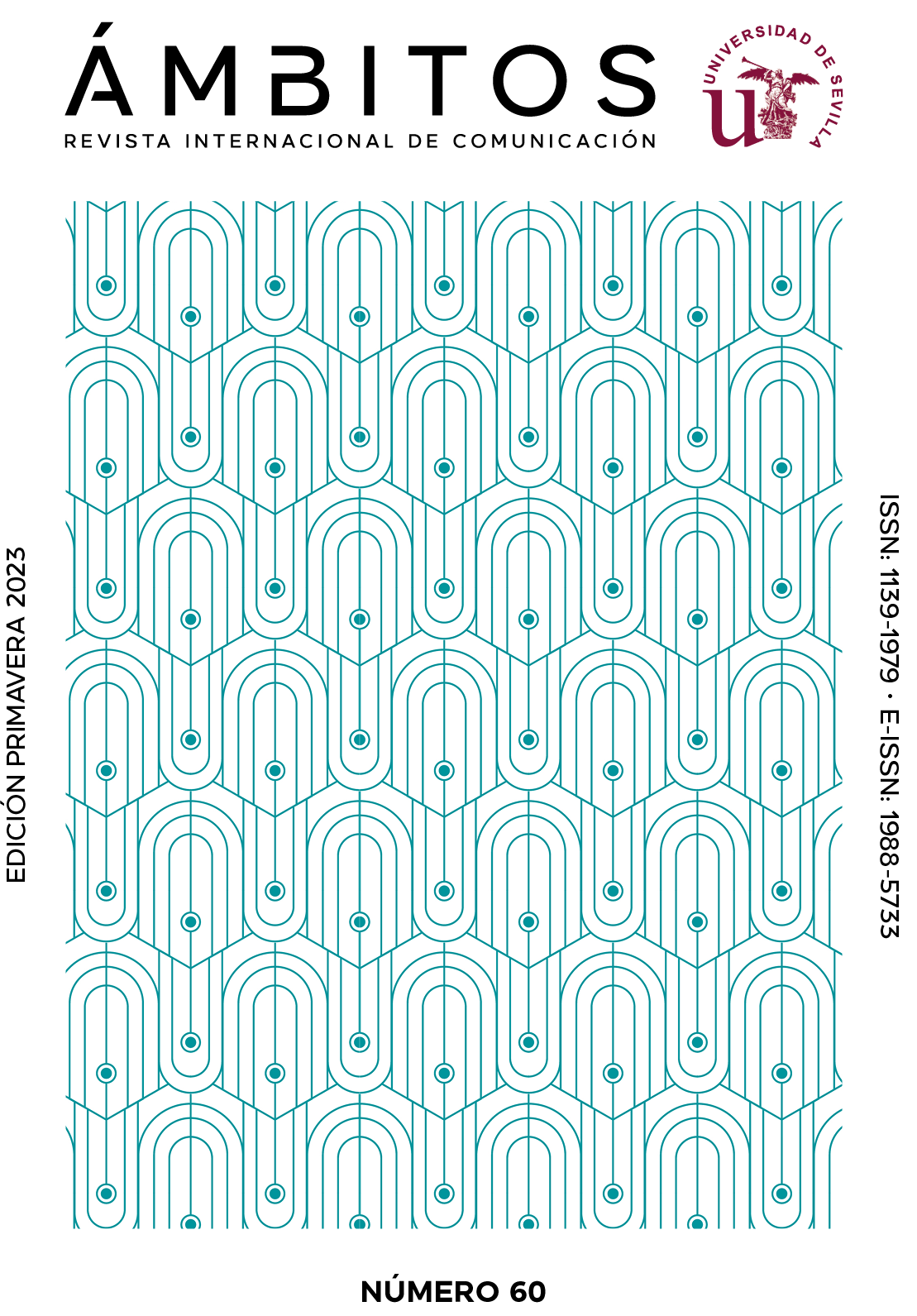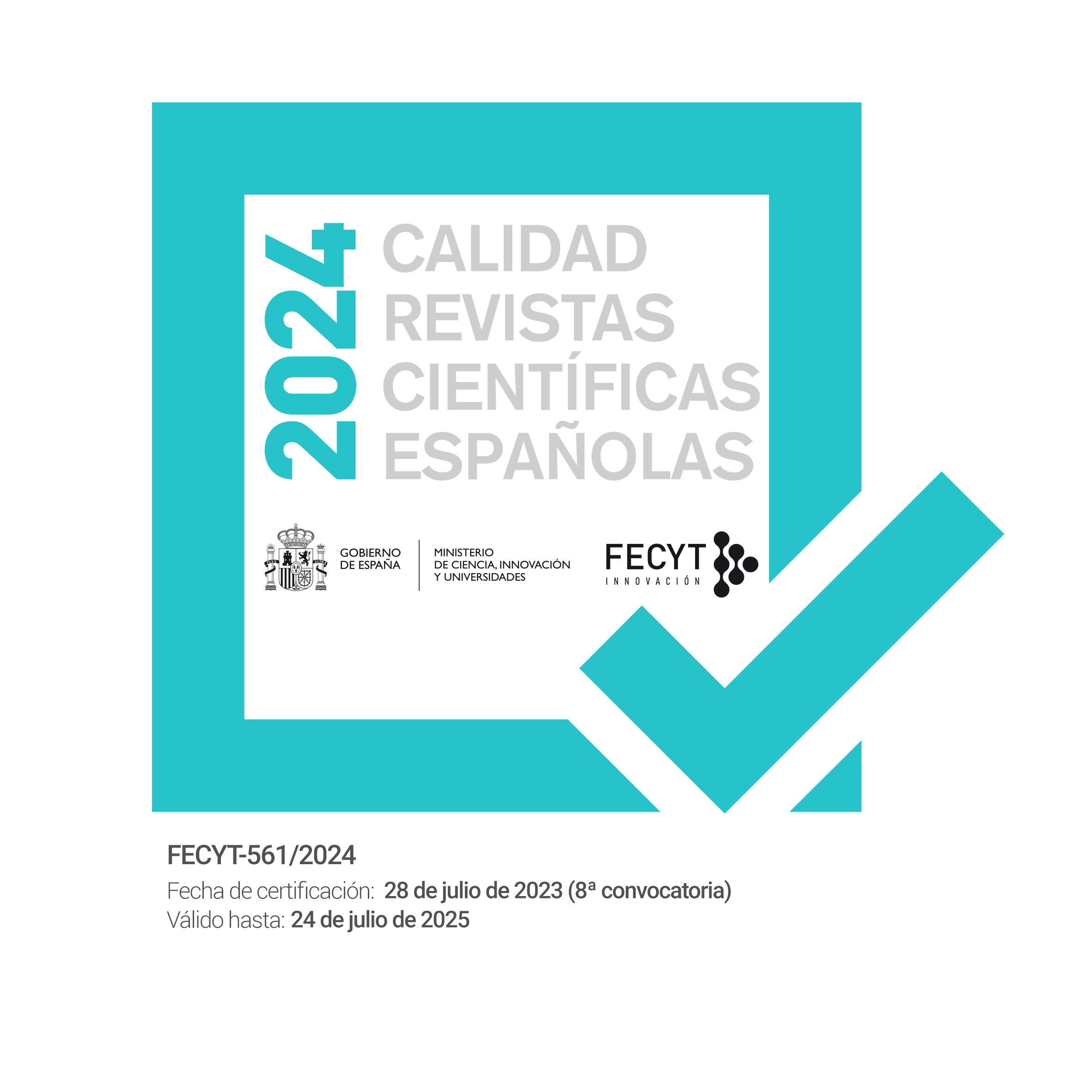Is the World Cup in TikTok? An analysis of the portuguese media coverage of de World Cup 2022
DOI:
https://doi.org/10.12795/Ambitos.2023.i60.03Keywords:
world cup, TikTok, Portugal, mobile devicesAbstract
The World Cup 2022, held in Qatar, was the first major global sporting event open to the public in the post-pandemic period. The event, which had great media coverage, was also one of the first, in the sports universe, to be held in an era marked by the expansion of coverage on digital social networks. In this context, an increase in the production of vertical audiovisual content stands out, resulting from the influence of platforms that have stood out in recent years, such as Instagram or TikTok. Considering this growth, but also the data that point to a weak bet by the media in some of these new platforms, in this research we consider it important to explore how the Portuguese media used TikTok to report the events of the largest global soccer competition. To achieve this goal we chose twelve profiles from media organizations and made a detailed analysis of the publications, in order to understand if there is a native production of content on the platform or just a content adaptation, which do not allow the use of all the platform’s resources and, thus, alienate users. The results point to the use of the platform in the coverage of the World Cup, although through a production adapted and mainly oriented to the dissemination of opinionated content, which ultimately reflects a weak bet on one of the platforms that has grown the most and where many users are part of the audience that has moved away from the media.
Downloads
References
Alonso-López, N., Sidorenko-Bautista, P., & Giacomelli, F. (2021). Beyond challenges and viral dance moves: TikTok as a vehicle for disinformation and fact-checking in Spain, Portugal, Brazil, and the USA. Anàlisi: Quaderns de Comunicació i Cultura, 64, 65-84.
https://doi.org/10.5565/rev/analisi.3411
Alves, R. (2006). Jornalismo digital: Dez anos de Web e a revolução continua. Comunicação e Sociedade, 9(10), 93-102.
https://doi.org/10.17231/comsoc.9(2006).1157
Ballesteros Herencia, C. A. (2020). La propagación digital del coronavirus: Midiendo el engagement del entretenimiento en la red social emergente TikTok. Revista Española de Comunicación en Salud, 11(1, sup. 1), 171-185.
https://doi.org/10.20318/recs.2020.5459
Basch, C., Hillyer, C., & Jaime, C. (2020). COVID-19 on TikTok: Harnessing an emerging social media platform to convey important public health messages. International Journal of Adolescent Medicine and Health, 34(5), 367-369.
https://doi.org/10.1515/ijamh-2020-0111
Bolaños, M. (2023). Tendencias 2023: del algoritmo a los humanos. Story Baker.
Bonito, M., Giacomelli, F., & Borges, V. (2022). Ubíqua e Interativa: a primeira transmissão de uma partida oficial de futebol no TikTok. In M. Bonito & A. Baccin (Orgs.), 15 anos do curso de Jornalismo. UNIPAMPA.
Canavilhas, J., Baldaia, D., & Di Fátima, B. (2022). Mundial de Futebol 2022. Portugal no Universo Digital. Editora LabCom.
Canavilhas, J. (2022). Artificial Intelligence and Journalism: Current Situation and Expectations in the Portuguese Sports Media. Journalism and Media, 3(3), 510-520.
https://doi.org/10.3390/journalmedia3030035
Canavilhas, J., & Giacomelli, F. (2015). O lugar do esporte na rádio: estudo de caso no Brasil e em Portugal. Rádio-Leituras, v.6, n.2. https://periodicos.ufop.br/radio-leituras/article/view/82
Canavilhas, J., & Giacomelli, F. (2021). Formatos imersivos no jornalismo Português: estudo das produções Público 360º. In A. Baccin, S. Silveira, & V. Belochio (Eds.), 25 anos de jornalismo digital no Brasil: A contribuição da pesquisadora Luciana Mielniczuk para os estudos no país (pp. 157-180). Editora Insular.
Cardoso, G., Paisana, M., & Pinto-Martinho, A. (2022). Digital News Report Portugal 2022. OberCom - Observatório da Comunicação. https://bit.ly/3nrhABi
Colussi, J., & Reis, T. (2022). Apropriação jornalística do TikTok: uma análise do Estadão. In J. Canavilhas, C. Rodrigues, R. Morais, & F. Giacomelli (Eds.), Mobilidade e Inteligência Artificial. Os novos caminhos do Jornalismo (pp. 381-399). Editora LabCom.
Coutinho, C. (2015). Metodologia de Investigação em Ciências Sociais e Humanas: Teoria e Prática (2nd ed.). Edições Almedina.
DataReportal. (2022). Digital 2022 Global Digital Overview. https://bit.ly/3lNbbjB
Feng, Y., Chen, C., & Wu, S. (2019). Evaluation of charm factors of short video user experience using FAHP-A case study of Tik Tok App. [). IOP Publishing.]. IOP Conference Series. Materials Science and Engineering, 688(5), 055068.
https://doi.org/10.1088/1757-899X/688/5/055068
Figuereo-Benítez, J. C., Oliveira, J. S. d. y Mancinas-Chávez, R. (2022). TikTok como herramienta de comunicación política de los presidentes iberoamericanos. En J. I. Aguaded Gómez, A. Vizcaíno Verdú, Á. Hernando Gómez y M. Bonilla-del-Río (Eds.), Redes sociales y ciudadanía: Ciberculturas para el aprendizaje (pp. 103-112). Grupo Comunicar Ediciones.
Gans, H. J. (2003). Democracy and the News. Oxford University Press.
García-Avilés, J. A. (2020). Reinventing Television News: Innovative Formats in a Social media Environment. En J. Vázquez-Herrero, S. Direito-Rebollal, A. Silva-Rodríguez, & X. López-García (Eds.), Journalistic Metamorphosis. Studies in Big Data (Vol. 70) (pp. 143-156). Springer.
https://doi.org/10.1007/978-3-030-36315-4_11
Martins, R., & Vieira, J. (2021). Podcasts no jornalismo português - o caso P24. media & Jornalismo, 21(38), 99-122.
https://doi.org/10.14195/2183-5462_38_5
MediaKix. (2020). Top TikTok Statistics Demographics. https://bit.ly/2L0s4Td
Morais, R., & Paiva, A. S. (2022). E tudo o podcast levou: uma reflexão sobre a programação radiofónica e a produção de podcasts pelas principais rádios portuguesas. In S. Santos & J. Miranda (Eds.), O podcast e as novas dinâmicas dos conteúdos sonoros no ambiente digital (pp. 69-93). Imprensa da Universidade de Coimbra.
Morris, D. (1982). A tribo do futebol. Mem Martind: Europa-América.
Neuberger, C., Nuernbergk, C., & Langenohl, S. (2019). Journalism as Multichannel Communication. Journalism Studies, 20(9), 1260-1280.
https://doi.org/10.1080/1461670X.2018.1507685
Newman, N. (2022). How publishers are learning to create and distribute news on TikTok. Reuters Institute. https://bit.ly/3lLRjxg
Newman, N., Fletcher, R., Schulz, A., Andı, S., Robertson, C., & Nielsen, R. (2021). Reuters Institute. Digital News Report 2021 (10th ed.). University of Oxford. https://bit.ly/3lMoYXu
Omar, B., & Dequan, W. (2020). Watch, Share or Create: The Influence of Personality Traits and User Motivation on TikTok Mobile Video Usage. [iJIM]. International Journal of Interactive Mobile Technologies, 14(04), 121-137.
https://doi.org/10.3991/ijim.v14i04.12429
Quiroz, N. T. (2020). TikTok: La aplicación favorita durante el aislamiento. Revista Argentina De Estudios De Juventud, (14), 1-9.
https://doi.org/10.24215/18524907e044
Roberts, K. (2004). Lovemarks: The Future Beyond Brands. Powerhouse Books.
Salaverría, R. (2018) Allá donde estés, habrá noticias. Cuadernos de Periodistas, (35) https://bit.ly/2rNxuGd
Salb, S. F. (2021). #NewsOnTikTok : A content analysis of the use of text elements by legacy news media on TikTok. [Master Thesis]. Malmö University, Faculty of Culture and Society (KS), School of Arts and Communication (K3). https://bit.ly/3TKkyx4
Sidorenko-Bautista, P., Herranz de la Casa, J. M. y Cantero de Julián, J. I. (2021a). Use of New Narratives for COVID-19 Reporting: From 360º Videos to Ephemeral TikTok Videos in Online Media. Tripodos, 1(47), 105-122.
https://doi.org/10.51698/tripodos.2020.47p105-122
Sidorenko-Bautista, P., Alonso-López, N. y Giacomelli, F. (2021b). Espacios de verificación en TikTok. Comunicación y formas narrativas para combatir la desinformación. Revista Latina de Comunicación Social, 79, 87-113.
https://doi.org/10.4185/RLCS-2021-1522
Sidorenko-Bautista, P., Alonso-López, N. y Terol-Bolinches, R. (2022a). El empleo de la red social TikTok por los equipos de fútbol de Primera División de la Liga Española. Global media Journal México, 18(35), 32-54.
https://doi.org/10.29105/gmjmx18.35-2
Sidorenko-Bautista, P., Camacho, L., & Herranz de la Casa, J. M. (2022b). TikTok y Twitch Pueden Ser Canales Innovadores del Periodismo para la ‘Generacíon Z. In J. Canavilhas, C. Rodrigues, R. Morais, & F. Giacomelli (Eds.), Mobilidade e Inteligência Artificial. Os novos caminhos do Jornalismo (pp. 173-178). Editora LabCom.
Šíma, J. (2021). Market potential of TikTok in the context of the communication range of soccer players on social networks. AUC Kinanthropologica, 57(2), 195-217.
https://doi.org/10.14712/23366052.2021.13
Vázquez-Herrero, J., Negreira-Rey, M.-C., & Rodríguez-Vázquez, A.-I. (2021). Intersections between TikTok and TV: Channels and Programmes Thinking Outside the Box. Journalism and Media, 2(1), 1-13.
Published
How to Cite
Issue
Section
License
Copyright (c) 2023 Fábio Giacomelli, Ricardo Morais

This work is licensed under a Creative Commons Attribution-NonCommercial-ShareAlike 4.0 International License.
Ámbitos. Revista Internacional de Comunicación is an open access journal, which means that all content is freely available at no charge to the user or their institution. Users may read, download, copy, distribute, distribute, print, search or link to the full text of articles, or use them for any other lawful purpose, without seeking prior permission from the publisher or author. This definition of open access is in accordance with the Budapest Open Access Initiative (BOAI).

Unless otherwise noted, all content in the electronic edition is distributed under a "Creative Commons Attribution-NonCommercial-ShareAlike 4.0 International License". You can consult the informative version and legal text of the licence here. This should be expressly stated in this way where necessary.
In case of acceptance of the manuscript, the authors cede the rights of the work for its publication to Ámbitos. Revista Internacional de Comunicación under the Attribution-NonCommercial-ShareAlike 4.0 International license contract (CC BY-NC-SA 4.0). The authors retain copyright and third parties are authorised to copy, distribute and make use of the work, provided they comply with the terms and conditions set out in the licence
- Cite the authorship and the original source of publication (journal, publisher and URL of the work).
- Do not use them for commercial purposes.
- If you remix, transform or create from the material, you must release your contributions under the same license as the original.
More information can be found at https://creativecommons.org/licenses/by-nc-sa/4.0/deed.es


















